
Paul
Häberer, “Bauhaus Ausstellung Weimar Juli–Sept, 1923, Karte 13″ (1923),
lithograph, 3 15/16 x 5 7/8 inches (all images courtesy Museum of
Modern Art, Committee on Architecture and Design Funds, photos by John
Wronn)
A complete 20-postcard set of Postkarte für die Bauhaus Ausstellung Weimar was recently acquired by the Museum of Modern Art (MoMA), and shared by Pamela Popeson, a preparator in the Department of Architecture and Design, on MoMA’s Inside/Out blog. MoMA itself is an institution entwined with the history of Bauhaus, as explored in the 2009 Bauhaus: Workshops for Modernity exhibition.
“These Bauhaus postcards were the mail art of their day,” Juliet Kinchin, curator in the Department of Architecture and Design, told Hyperallergic. “Many progressive artists in the early 20th century were interested in forms of mass production and new print media to spread their ideas quickly and internationally. The medium was an important part of the message: modern design was not about creating one-off monumental or exclusive creations.”
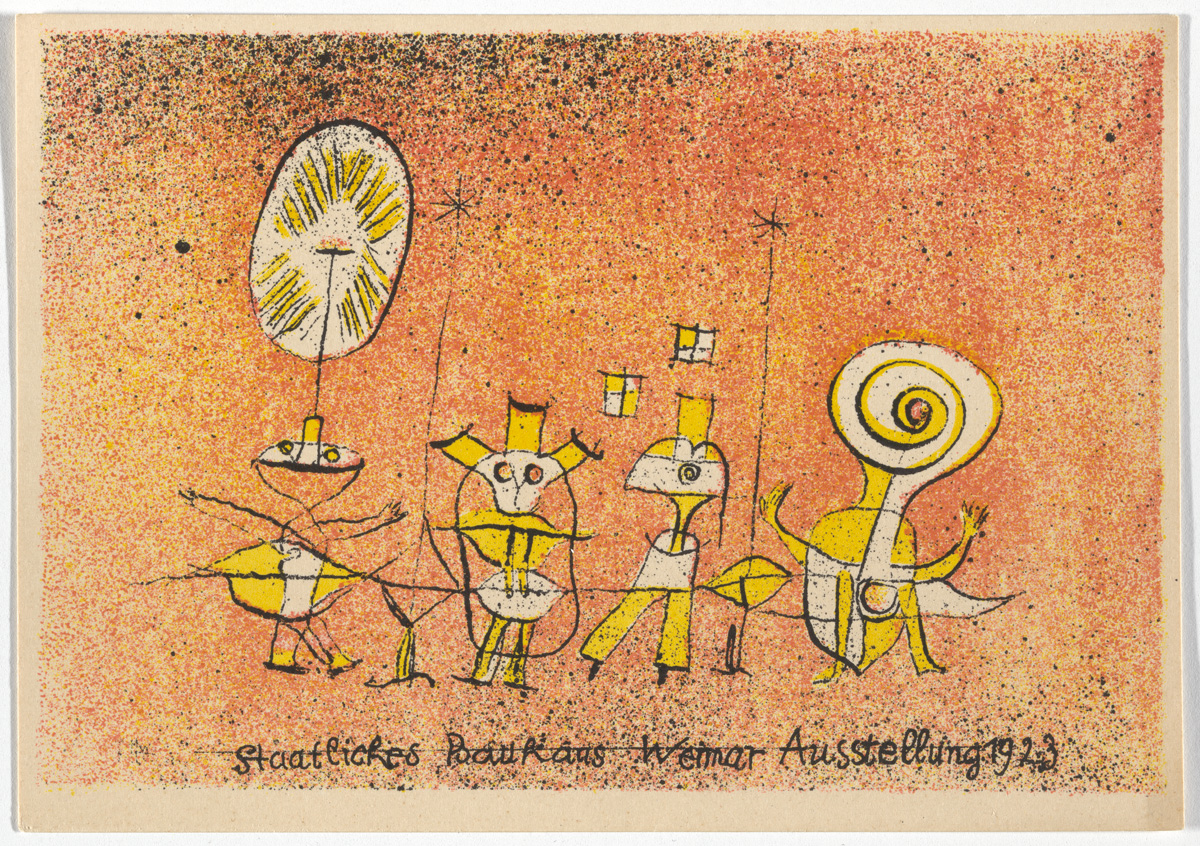
Paul Klee, “Bauhaus Ausstellung Weimar Juli–Sept, 1923, Karte 5″ (1923), lithograph, 3 15/16 x 5 7/8 inches
“Viewed as a set you get a snapshot of the school’s educational philosophy and the sheer variety of their productions,” Kinchin added. “This was before the identity of the Bauhaus became linked in popular perceptions with a unified look of standardization and tubular steel.”
The exhibition postcard is something of a fading communication tool, with most people finding out about shows online nowadays, and the postcards offered in galleries generally replicating works on display. Below is a selection from the postcard set shared by MoMA, where each card is a small piece of art that stands on its own while also reflecting the Bauhaus’s radical ideas from its debut exhibition.

Lyonel Feininger, “Bauhaus Ausstellung Weimar Juli–Sept, 1923, Karte 1″ (1923), lithograph, 5 7/8 × 3 15/16 inches

Wassily Kandinsky, “Bauhaus Ausstellung Weimar Juli–Sept, 1923, Karte 3″ (1923), lithograph, 5 7/8 × 3 15/16 inches

Paul Klee, “Bauhaus Ausstellung Weimar Juli–Sept, 1923, Karte 4″ (1923), lithograph, 5 7/8 × 3 15/16 inches

László Moholy-Nagy, “Bauhaus Ausstellung Weimar Juli–Sept, 1923, Karte 7″ (1923), lithograph, 5 7/8 × 3 15/16 inches

Oskar Schlemmer, “Bauhaus Ausstellung Weimar Juli–Sept, 1923, Karte 8″ (1923), lithograph, 5 7/8 × 3 15/16 inches
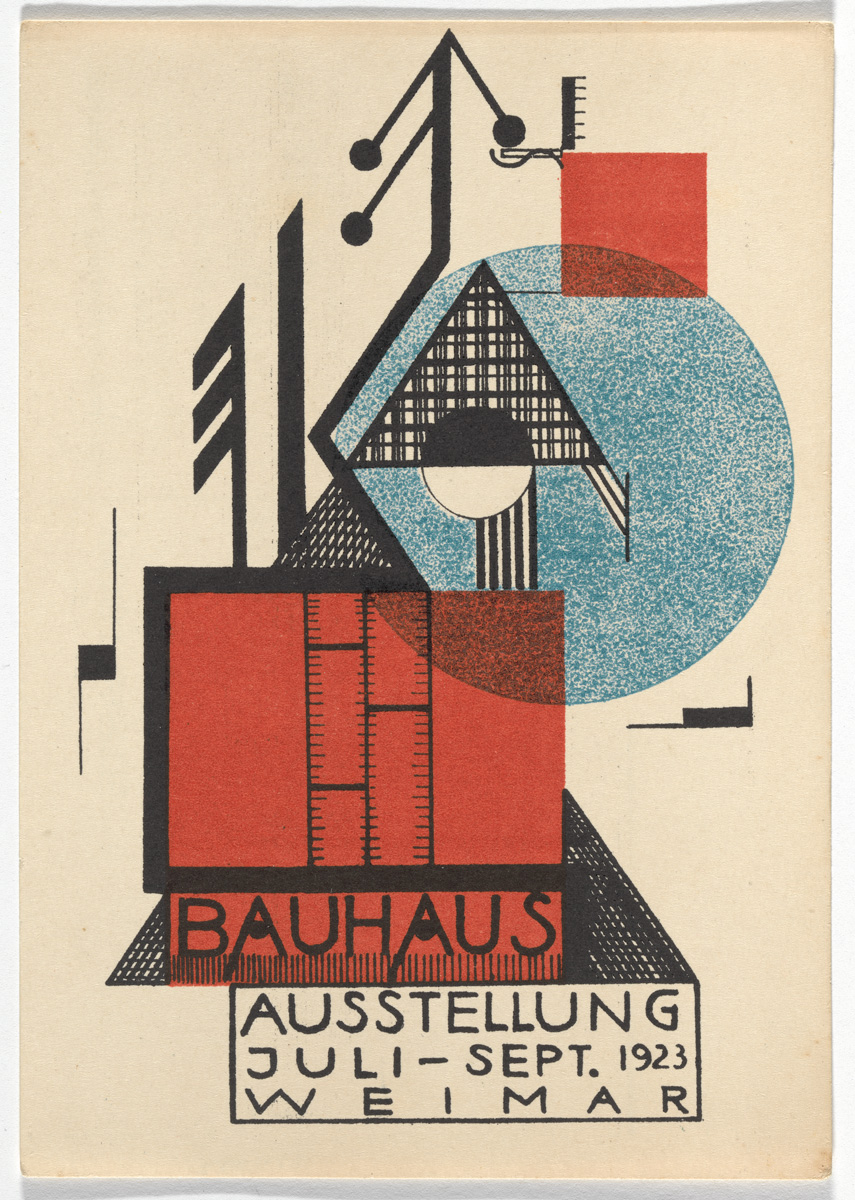
Rudolf Baschant, “Bauhaus Ausstellung Weimar Juli–Sept, 1923, Karte 9″ (1923), lithograph, 5 7/8 × 3 15/16 inches
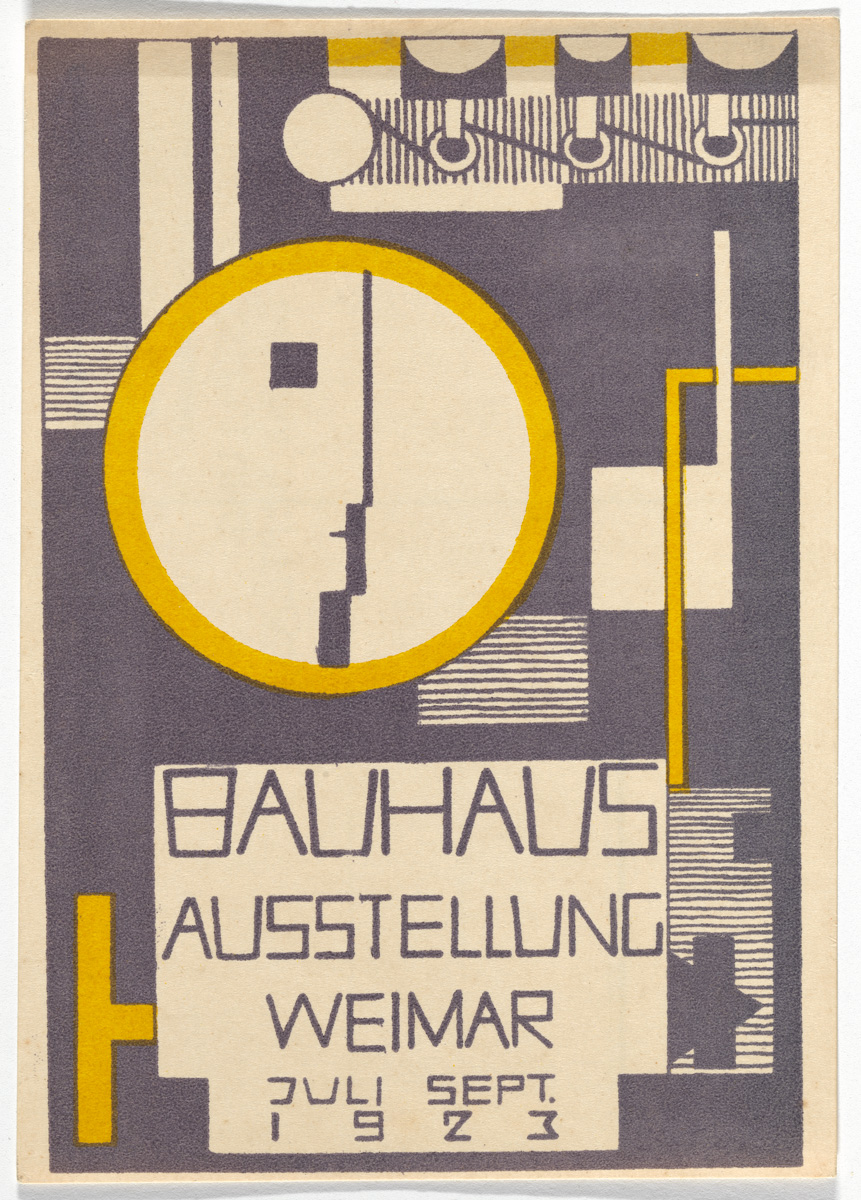
Rudolf Baschant, “Bauhaus Ausstellung Weimar Juli–Sept, 1923, Karte 10″ (1923), lithograph, 5 7/8 × 3 15/16 inches
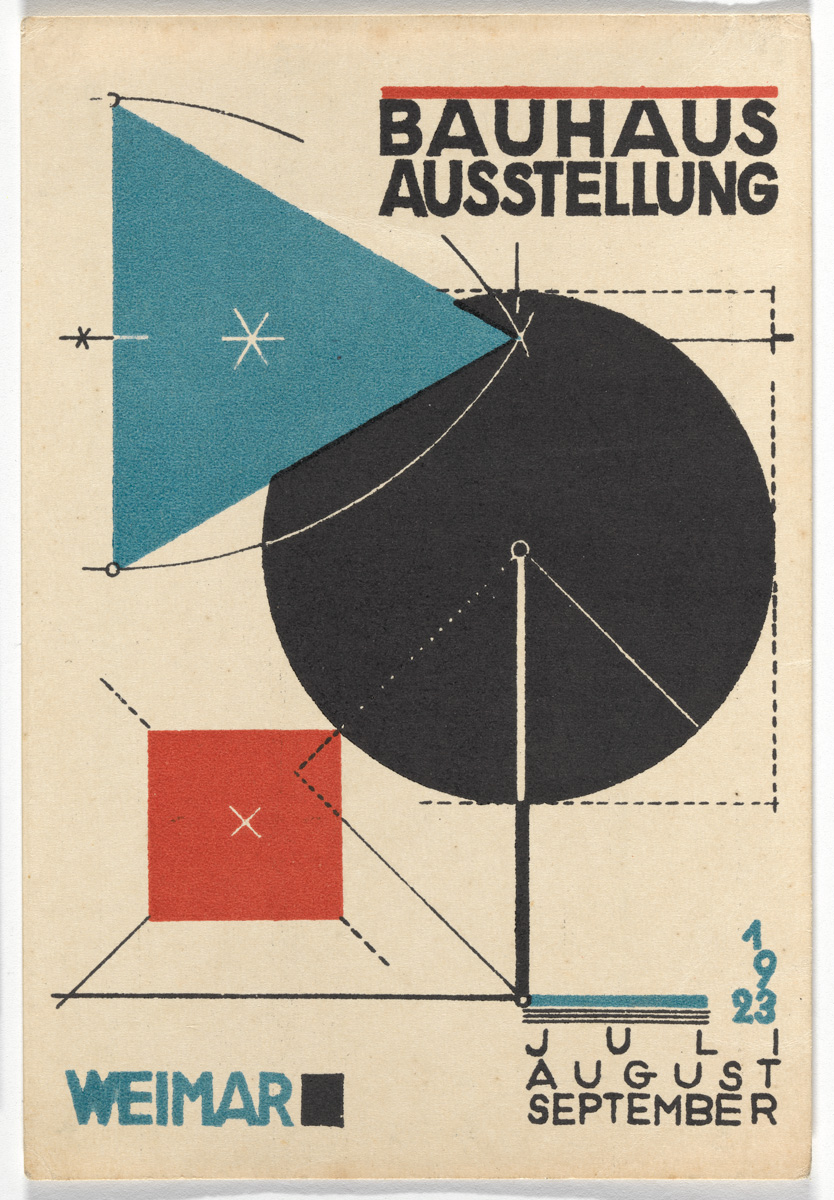
Herbert Bayer, “Bauhaus Ausstellung Weimar Juli–Sept, 1923, Karte 11″ (1923), lithograph, 5 7/8 × 3 15/16 inches

Ludwig Hirschfeld-Mack, “Bauhaus Ausstellung Weimar Juli–Sept, 1923, Karte 15″ (1923), lithograph, 3 15/16 x 5 7/8 inches
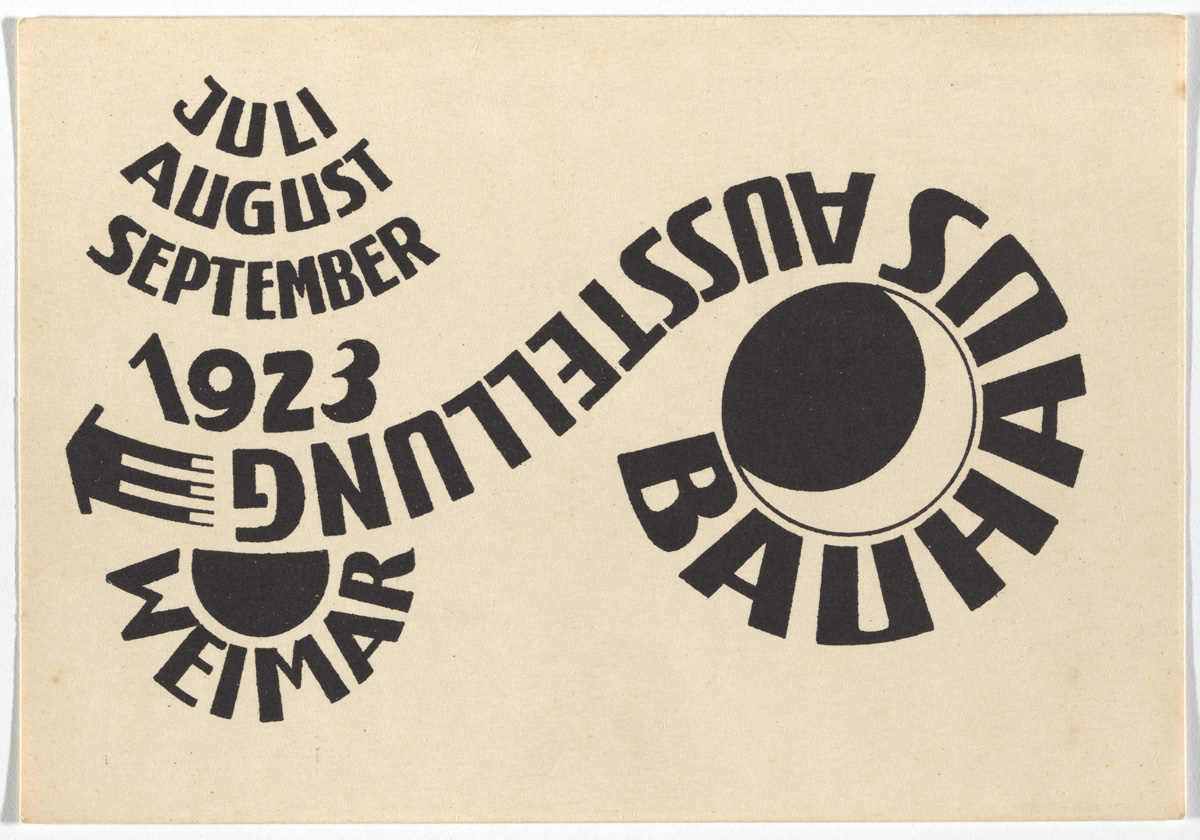
Ludwig Hirschfeld-Mack, “Bauhaus Ausstellung Weimar Juli–Sept, 1923, Karte 16″ (1923), lithograph, 3 15/16 x 5 7/8 inches
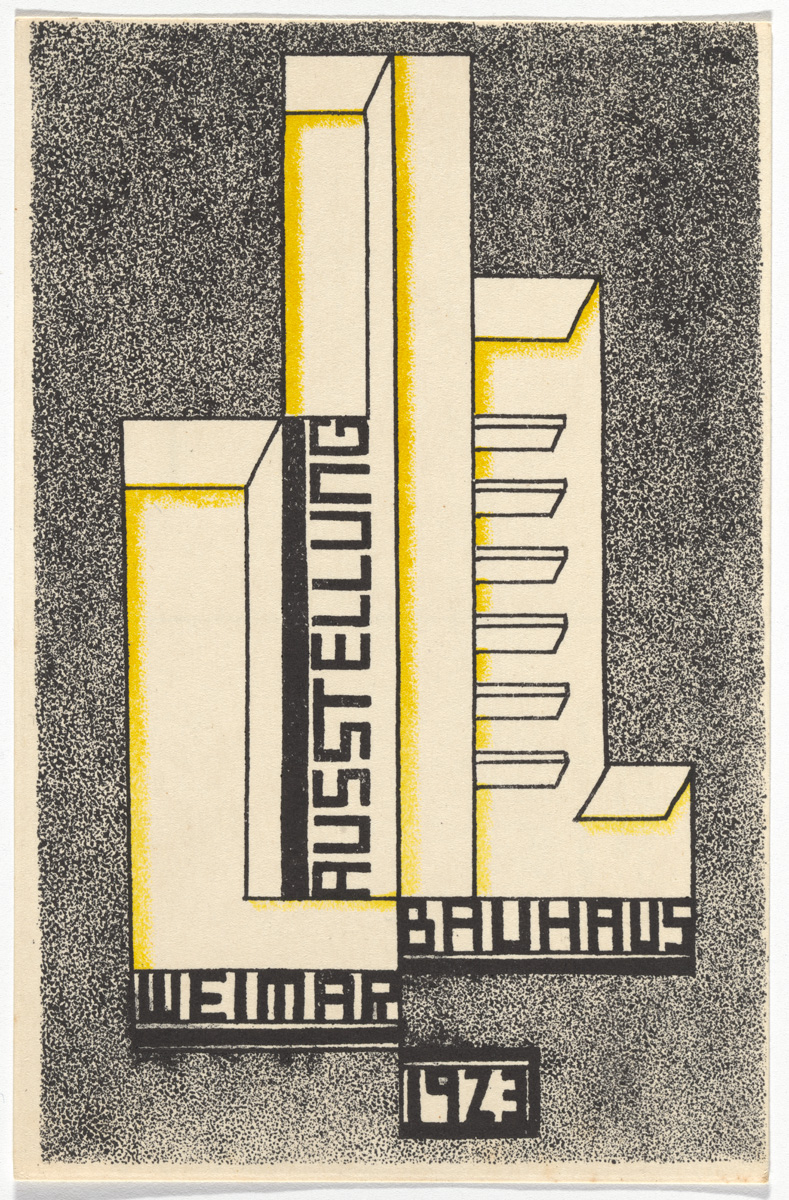
Farkas Molnar, “Bauhaus Ausstellung Weimar Juli–Sept, 1923, Karte 17″ (1923), lithograph, 5 7/8 × 3 15/16 inches

Kurt Schmidt, “Bauhaus Ausstellung Weimar Juli–Sept, 1923, Karte 18″ (1923), lithograph, 5 7/8 × 3 15/16 inches
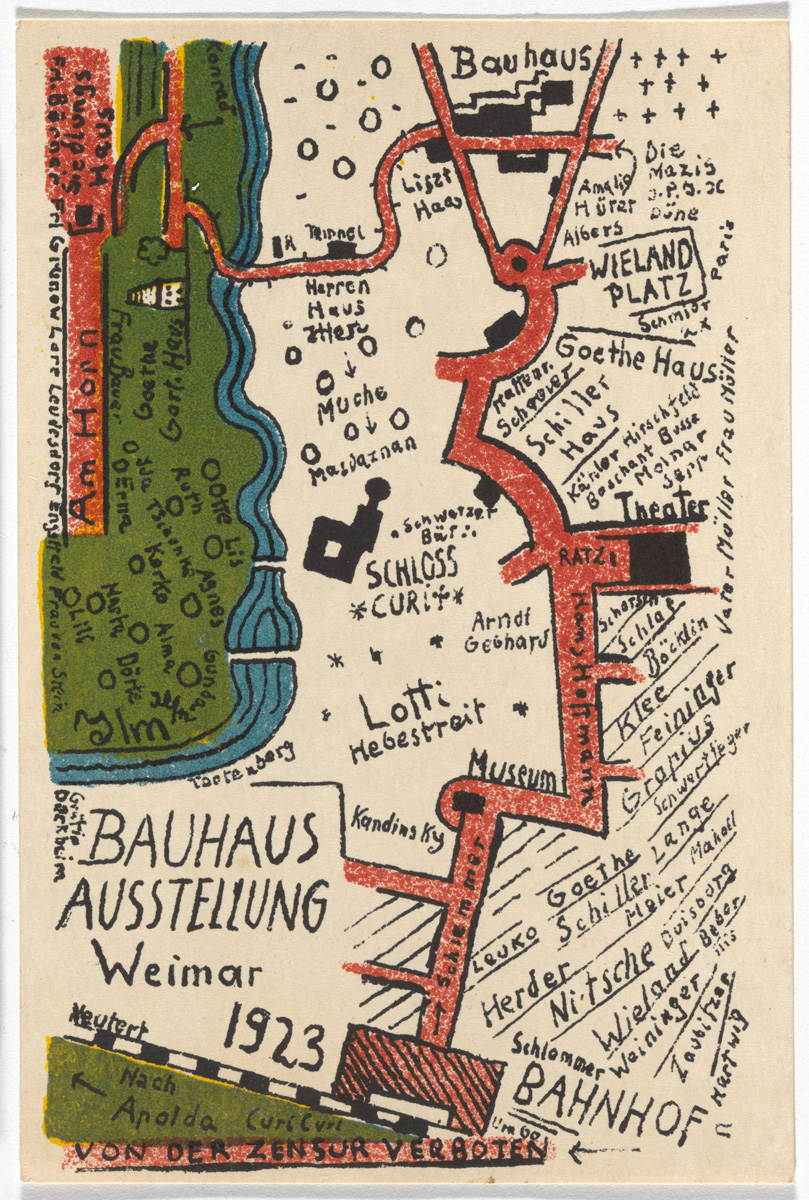
Kurt Schmidt, “Bauhaus Ausstellung Weimar Juli–Sept, 1923, Karte 19″ (1923), lithograph, 5 7/8 × 3 15/16 inches

Δεν υπάρχουν σχόλια:
Δημοσίευση σχολίου